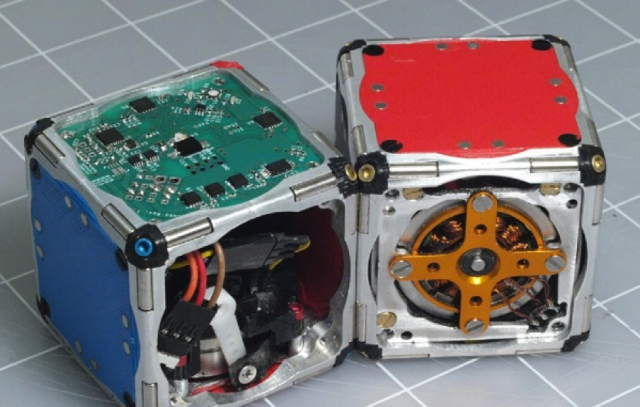Someday, your Ikea furniture might assemble itself
Ars Technica » Scientific Method 2013-10-07

At a certain level of complexity and obligation, sets of blocks can easily go from fun to tiresome to assemble. Legos? K’Nex? Great. Ikea furniture? Bridges? Construction scaffolding? Not so much. To make things easier, three scientists at MIT recently exhibited a system of self-assembling cubic robots that could in theory automate the process of putting complex systems together.
The blocks, dubbed M-Blocks, use a combination of magnets and an internal flywheel to move around and stick together. The flywheels, running off an internal battery, generate angular momentum that allows the blocks to flick themselves at each other, spinning them through the air. Magnets on the surfaces of the blocks allow them to click into position.
Each flywheel inside the blocks can spin at up to 20,000 rotations per minute. Motion happens when the flywheel spins and then is suddenly braked by a servo motor that tightens a belt encircling the flywheel, imparting its angular momentum to the body of the blocks. That momentum sends the block flying at a certain velocity toward its fellow blocks (if there is a lot of it) or else rolling across the ground (if there's less of it). Watching a video of the blocks self-assembling, the effect is similar to watching Sid’s toys rally in Toy Story—a little off-putting to see so many parts moving into a whole at once, unpredictably moving together like balletic dying fish.
Read 7 remaining paragraphs | Comments




